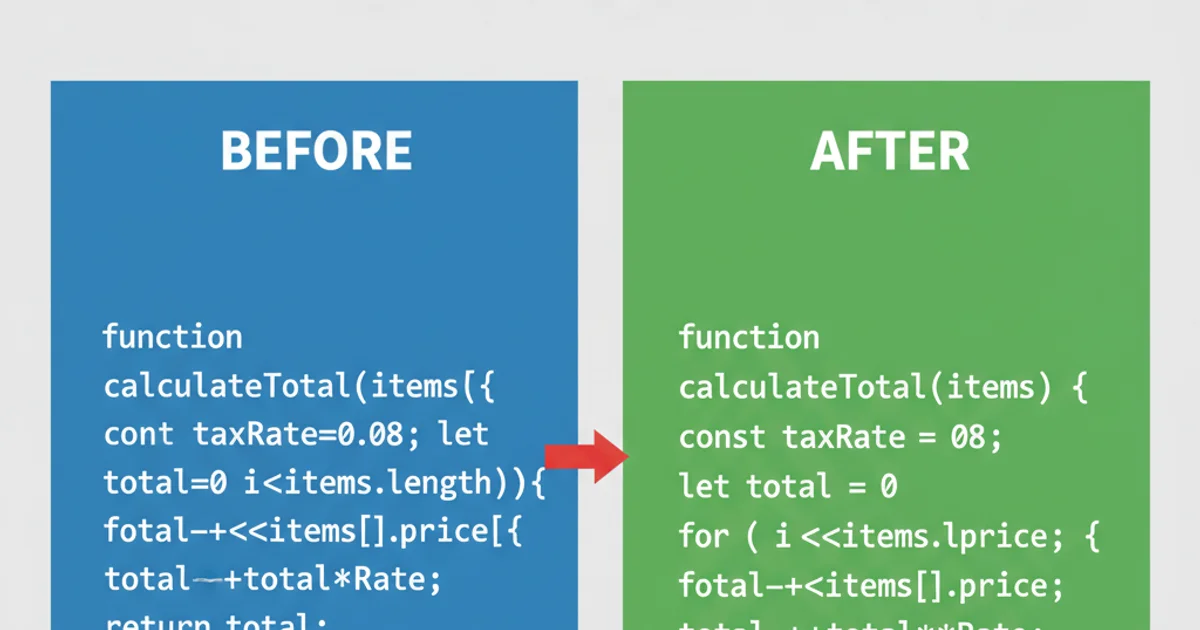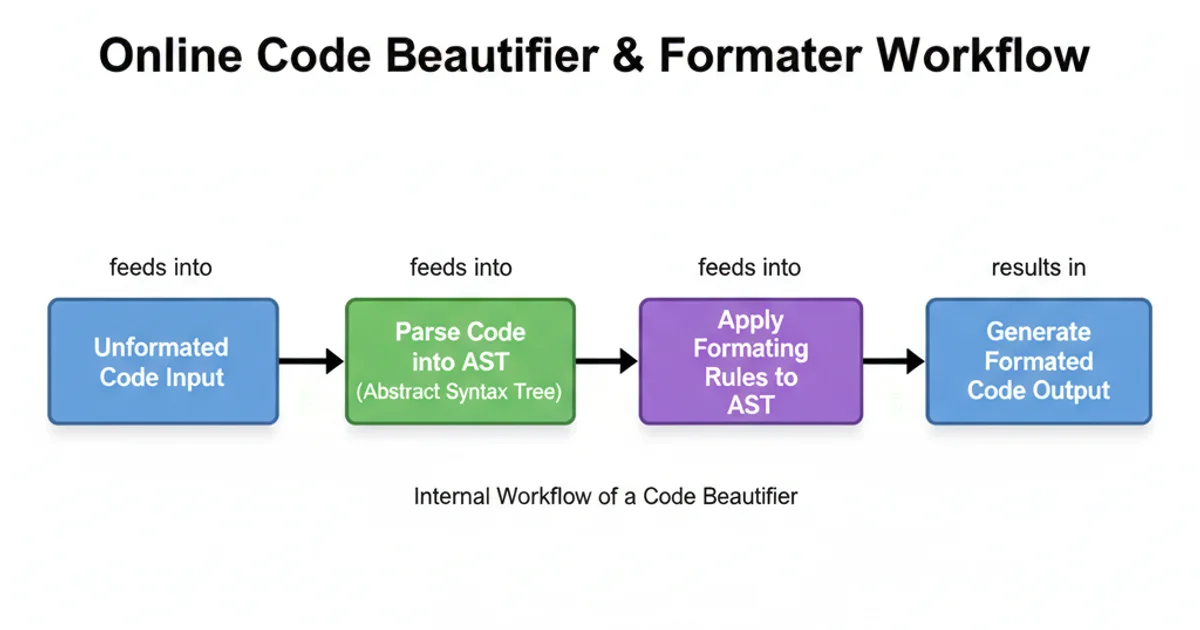Online code beautifier and formatter
Categories:
Streamline Your Code: The Power of Online Beautifiers and Formatters

Discover how online code beautifiers and formatters enhance readability, maintain consistency, and boost productivity for developers across all languages.
In the world of software development, code readability and consistency are paramount. Messy, unformatted code can be a nightmare to debug, maintain, and collaborate on. This is where online code beautifiers and formatters come into play. These indispensable tools automatically reformat your code according to predefined style guidelines, transforming chaotic scripts into clean, organized, and easily understandable masterpieces. This article explores the benefits, common features, and practical applications of these powerful tools.
Why Code Formatting Matters
Consistent code formatting is not just about aesthetics; it's a critical aspect of software quality and team efficiency. Unformatted code can lead to several problems:
- Reduced Readability: Inconsistent indentation, spacing, and bracing styles make it difficult to follow the logic of the code.
- Increased Debugging Time: Developers spend more time deciphering the code's structure than understanding its functionality.
- Collaboration Challenges: When multiple developers work on the same codebase with different formatting styles, merge conflicts become more frequent and harder to resolve.
- Maintenance Headaches: Future modifications to poorly formatted code are prone to introducing new bugs.
Code beautifiers and formatters address these issues by enforcing a uniform style, making code easier to read, understand, and maintain for everyone involved.

Before and After: The impact of code formatting on readability.
Key Features of Online Code Beautifiers
Modern online code beautifiers offer a wide array of features designed to cater to diverse programming needs. While specific functionalities may vary between tools, common features include:
- Language Support: Comprehensive support for popular languages like JavaScript, Python, HTML, CSS, JSON, XML, C++, Java, PHP, and more.
- Customizable Rules: Ability to define and apply custom formatting rules, such as indentation size (tabs vs. spaces), brace style, line wrapping, and semicolon usage.
- Error Highlighting: Some tools can identify syntax errors or potential issues during the formatting process.
- Minification: The opposite of beautification, minification removes unnecessary characters (whitespace, comments) to reduce file size for production environments.
- Prettification: A term often used interchangeably with beautification, focusing on making code visually appealing and easy to read.
- Integration Options: Many tools offer API access or command-line interfaces for integration into build pipelines or IDEs, though online versions are typically standalone web applications.
function myFunction( param1,param2 ){
if(param1>param2){
console.log( "Param1 is greater" )
}else{
console.log("Param2 is greater or equal")
}
}
myFunction(10,5);
function myFunction(param1, param2) {
if (param1 > param2) {
console.log("Param1 is greater");
} else {
console.log("Param2 is greater or equal");
}
}
myFunction(10, 5);
How Online Beautifiers Work
At their core, code beautifiers parse your source code into an Abstract Syntax Tree (AST). The AST is a tree representation of the syntactic structure of your code. Once the AST is built, the beautifier traverses this tree, applying the specified formatting rules. Finally, it generates new source code from the modified AST, ensuring all rules are consistently applied.
This process ensures that the structural integrity and functionality of your code remain intact while only its presentation is altered. It's a sophisticated process that goes beyond simple find-and-replace operations, understanding the grammatical rules of the programming language.

The internal workflow of a code beautifier.
Practical Applications and Best Practices
Online code beautifiers are incredibly useful in various scenarios:
- Quick Formatting: For one-off scripts, snippets from Stack Overflow, or code received from external sources that needs immediate cleanup.
- Learning and Experimentation: Helps beginners understand proper code structure and style.
- Code Reviews: Ensures that code submitted for review adheres to a consistent style, allowing reviewers to focus on logic rather than formatting.
- Legacy Code Cleanup: A quick way to bring older, unformatted codebases up to modern style standards.
Best Practices:
- Choose the Right Tool: Select a beautifier that supports your language and offers the customization options you need.
- Understand the Rules: Familiarize yourself with the default formatting rules or configure them to match your team's style guide.
- Integrate into Workflow: For team projects, integrate a formatter into your CI/CD pipeline or use pre-commit hooks to ensure all code is formatted before it's committed.
- Version Control: Always commit formatted code to version control. Avoid mixing formatting changes with functional changes in the same commit.